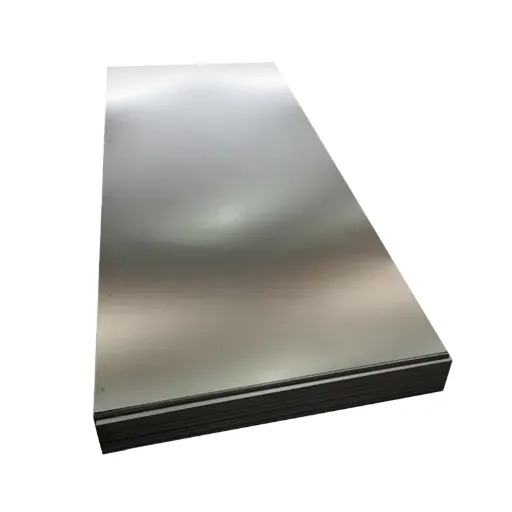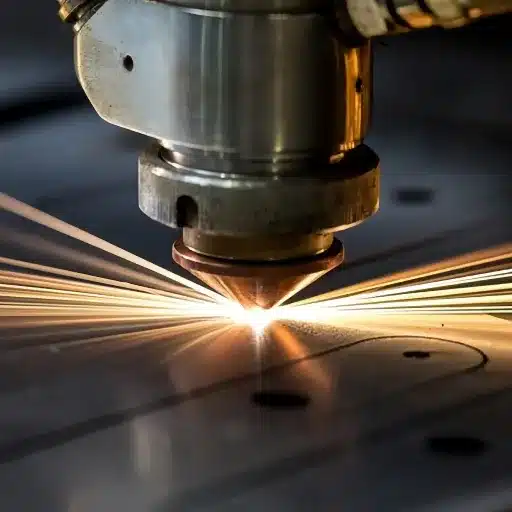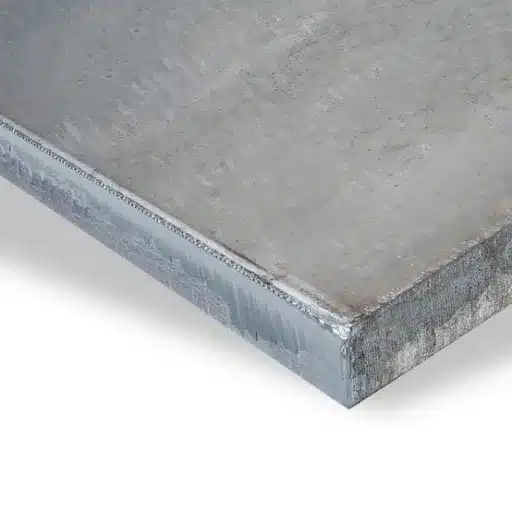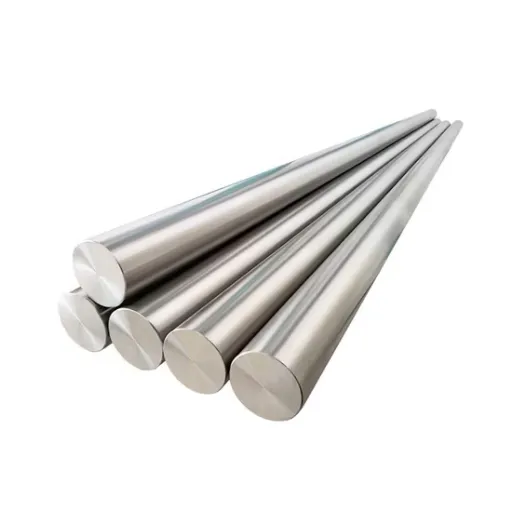Picking the right materials for any building project significantly impacts its durability, functionality, and cost. Red iron and steel remain two of the most contested materials in modern construction. Both have their advantages and disadvantages, making the decision anything but simple. Are you searching for a sturdy commercial structure framework or a trustworthy residential project option? In this blog, we will analyze the significant differences between red iron and steel, their advantages, and what to keep in mind so you can make a decision tailored to your situation. You will learn which material outshines the other for your upcoming construction project.
What is Red Iron Steel?
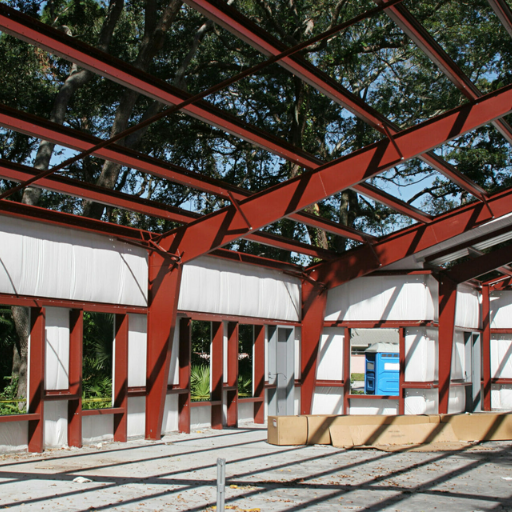
Red iron steel, or structural steel, is used for construction purposes because it is tough and long-lasting. This type of steel is covered with red oxide, which protects it from rust and corrosion. Besides construction, red oxide primer is also used for automotive parts since it can easily be painted over. It is often used for frameworks in buildings, warehouses, and other large structures as it is cheaper than alternatives.
Understanding Red Iron and its Properties
Red iron is highly valued in construction due to its strength and durability. Below are five key reasons why red iron should be considered for structural use.
- Resistance to Corrosion
Using red oxide primer on the surface enhances the material’s potential for enduring rust and corrosion, even in extreme environmental conditions.
- High Strength
Red iron’s strength allows it to shoulder considerable loads while offering stability to support expansive structures.
- Cost-effectiveness
Builders will find red iron to be inexpensive, as it combines low cost with durability over time, a rare combination among building materials.
- Ease of Assembly
Red iron pieces can be pre-engineered, which saves on assembly and increases efficiency, reducing construction time and labor costs.
- Fire Resistance
The material’s high fire endurance achieves increased structural safety and compliance with building safety codes.
The Role of Iron Oxide Coating
Red iron steels are more appealing because of iron oxide coatings. Iron oxide coatings can shield red iron from moisture and oxygen without aesthetics. Studies suggest that harsh conditions do not impact the lifespan of iron oxide-coated red steel. Instead, it can increase its lifespan by 60%.
Moreover, developments in coating technology have also enhanced performance. Newer modern iron oxide coatings have better adhesion; thus, they are more readily bonded to the metal surface. Because of this, maintenance is less frequent, and structural repairs are more cost-effective in the long term. Research indicates that structures with iron oxide-coated red iron require significantly less maintenance and incur about 30% less maintenance cost over 20 years.
In addition, this iron oxide coating is found to be more environmentally friendly than others, because many are water-based which reduces the emission of VOCs into the atmosphere, thus contributing towards a more sustainable option for large construction projects. With such technology, the construction industry is provided with the opportunity to ensure that red iron structures are able to withstand the test of time while remaining economical and environmentally friendly for decades to come.
Applications of Red Iron in Construction
| Application Area | Key Features |
|---|---|
| Commercial Buildings | Large open spaces, flexible for malls and offices. |
| Industrial Facilities | Supports machinery and storage in factories, warehouses. |
| Agricultural Buildings | Durable for barns, storage sheds, and livestock shelters. |
| Residential Construction | Strong frameworks for custom homes and modern designs. |
| Aviation Hangars | Long spans for aircraft storage, no columns required. |
| Retail Spaces | Enables open floor layouts for flexible designs. |
| Sports Complexes | Ideal for large open arenas and gyms. |
| Storage Facilities | Durable for long-term industrial and commercial storage. |
| Energy-Efficient Designs | Open layouts allow for better light and airflow. |
| Sustainable Building | Made from recyclable steel, reducing environmental impact. |
How Do Red Iron Buildings Compare to Steel Buildings?

| Feature | Red Iron Buildings | Steel Buildings |
|---|---|---|
| Structural Strength | High tensile strength, ideal for large projects. | Less robust for heavy or large structures. |
| Customization | Fully customizable layouts and finishes. | Limited modification options. |
| Span Capability | Large clear spans without interior columns. | May need support columns for large spaces. |
| Durability | Rust-resistant, requires minimal upkeep. | Prone to corrosion without protective coatings. |
| Lifespan | Long-lasting, resilient against harsh environments. | Lifespan can vary with maintenance and materials. |
| Applications | Suitable for warehouses, factories, hangars. | More common for smaller buildings. |
| Eco-Friendliness | Made from recyclable materials, sustainable option. | Varies depending on construction and materials used. |
| Construction Speed | Prefabricated components enable faster assembly. | Can take longer for larger projects. |
| Initial Cost | Higher initial cost, offsets maintenance savings. | Typically lower but maintenance costs may rise. |
| Fire Resistance | Non-combustible, high safety standards. | Can be less fire-resistant depending on materials. |
Differences in Durability and Strength
Both red iron and steel buildings are known for their durability, although their structural features and uses differ. Red iron buildings are made from industrial-grade steel coated with red oxide. They are known for their long-term strength and resistance to corrosion. This coating is especially helpful in humid or rainy climates. Red iron buildings are best for large-scale industrial projects due to the incredible amount of weight or pressure they can sustain.
On the other hand, steel buildings include structures made from lightweight, cold-formed, or galvanized steel. A lightweight steel structure is more appropriate for houses or small commercial buildings because it is easier to install and offers adequate strength. Recent figures suggest that red iron steel has a tensile strength of about 50,000 psi. In comparison, structural steel used in typical steel buildings typically ranges from 36,000 to 58,000 psi based on the alloy and treatment used. Both materials have high load-bearing capability, but red iron tends to outperform in heavy-duty applications.
The location and the project specifications matter the most when making a decision. For instance, red iron buildings are better suited for massive structures like factories, warehouses, or even sports arenas because of their enormous strength and ability to endure harsh conditions. On the other hand, standard steel buildings are more suited for smaller projects or areas where heavy reinforcement is not needed because of their greater flexibility. Regardless of the choice, both options showcase steel’s renowned properties of durability and adaptability across diverse industries.
Comparing Building Materials and Costs
In my experience evaluating construction materials and their costs, red iron buildings stand out for large-scale, heavy-duty projects due to their strengthened durability, even though they might come with higher upfront costs. Standard steel buildings, however, are versatile and more economical for smaller-scale projects and regions where demand is not as structurally rigorous. Typically, my choices stem from the scale of the project, available funding, and the specific needs of the building.
Environmental Impact: Energy Efficiency and Sustainability
Energy efficiency and sustainability are key when erecting steel buildings. New steel structures often have management systems to minimize energy consumption and environmental impact. Here are five aspects illustrating how innovative construction techniques help promote sustainability and energy conservation:
- Use of Recycled Materials
Steel leads the pack in construction materials, with over 80 percent being recycled, making it one of the most recycled materials in the world. This further minimizes waste creation and, in turn, the need for raw materials.
- Thermal Insulation
With the modern age comes the advancement of insulation systems that help maintain internal temperatures while reducing heat loss. This leads to less energy being used for heating and cooling.
- Reflective Roofing
Less popular steel buildings have come to embrace reflective roofing, which reduces heating absorption, lowering the overall energy consumption of the building.
- Longevity and Durability
Steel buildings have an extended lifespan because of their nature, which decreases the need for replacements or repairs, preserving resources.
- Energy-Efficient Designs
Features such as solar panels, energy-saving windows, and optimized ventilation systems have significantly cut down operational energy, becoming a large part of steel buildings.
With steel buildings comes sustainable construction practices that can be embraced and adopted worldwide.
What are the Advantages of Red Iron Structures?
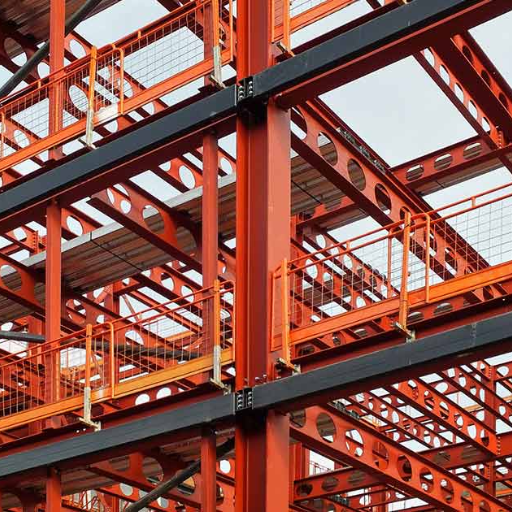
| Advantage | Description |
|---|---|
| High Strength | Supports heavy loads in large-scale structures. |
| Durable Material | Withstands extreme weather and harsh conditions. |
| Resistant to Rust | Protective coating prevents corrosion. |
| Eco-Friendly | Made with recyclable steel, reducing waste. |
| Fire-Resistant | Non-combustible, offers superior fire protection. |
| Clear Spans | Enables large spaces without interior columns. |
| Customizable Design | Flexible for various layouts and aesthetics. |
| Fast Construction | Pre-engineered components ease and speed assembly. |
| Low Maintenance | Minimal upkeep, reducing long-term costs. |
| Cost-Effective | Saves costs over time with longevity benefits. |
Benefits of Using Red Iron Over Other Materials
| Benefit | Description |
|---|---|
| Superior Strength | Handles heavier loads than wood or light steel. |
| Longer Lifespan | Resilient against wear and harsh conditions. |
| Rust Resistance | Protective layer prevents corrosion effectively. |
| Fire Resistance | Non-combustible, safer than wood structures. |
| Eco-Friendly | Made from recyclable materials, reducing waste. |
| Cost-Effective | Lower long-term costs due to durability. |
| Clear Span Capability | Allows large open spaces without columns. |
| Customizable Design | Flexible for various layouts and uses. |
| Low Maintenance | Requires minimal upkeep compared to wood. |
| Faster Construction | Prefabricated parts reduce building time. |
How Red Iron Enhances Structural Steel Design
Red iron further enhances structural steel’s design by adding features such as exceptional strength, corrosion resistance, and greater flexibility in design, making it well suited for modern construction requirements.
Long-Term Durability and Insulation Benefits
Red iron structural steel is recognized for its exceptional durability, resisting wear and tear over decades of use. Structural steel also naturally resists pests, rot, and extreme weather. Recent studies suggest that buildings made of structural steel can last over a century with proper maintenance, far outpacing traditional materials like wood.
When it comes to insulation, red iron steel works seamlessly with modern thermal and acoustic insulation systems. When paired with red iron steel frameworks, insulated panel systems can cut energy use by 30%, making them more cost-effective and sustainable. Advanced coatings and galvanized finishes enhance thermal efficiency by reflecting heat in extreme climates, ensuring long-term energy savings. Together, these features make red iron structural steel a smart investment for durability and environmentally responsible performance.
Are Pre-Engineered Buildings Better than Red Iron Buildings?
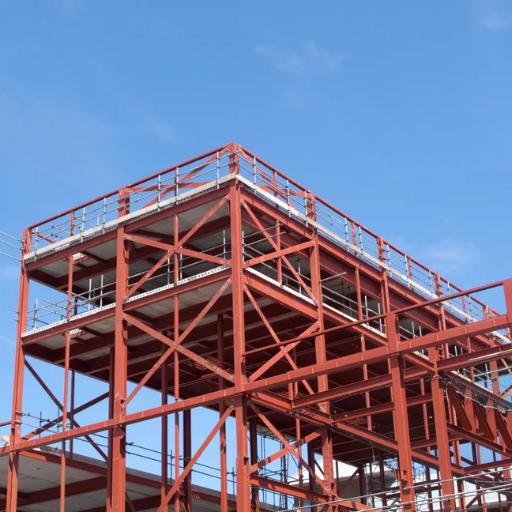
Both pre-engineered buildings and red iron buildings have their benefits and are better depending on specific project needs. Pre-engineered buildings are best for projects with a limited timeline and budget, as they are cost-effective and easier to assemble due to having all parts designed and pre-made. On the other hand, red iron buildings are best for large scale or more permanent structures because they are stronger and more durable. Regardless of which is chosen, both options come with their own budget, purpose, and location restrictions.
Understanding Pre-Engineered Building Concepts
| Concept | Description |
|---|---|
| Definition | Buildings made from prefabricated components. |
| Primary Materials | Steel frames, panels, and metal sheeting. |
| Design Process | Customizable designs tailored to building needs. |
| Assembly | Components arrive pre-cut and ready for assembly. |
| Construction Speed | Significantly faster than traditional buildings. |
| Cost Efficiency | Reduces labor, material, and maintenance costs. |
| Durability | Highly resistant to weather and environmental factors. |
| Flexibility | Suits industrial, commercial, and residential uses. |
| Eco-Friendly | Uses recyclable materials, reducing waste. |
| Clear Span | Allows large spaces without internal columns. |
Cost Analysis: Labor Costs and Material Efficiency
When deeply evaluating pre-engineered buildings, it is essential to analyze labor costs and material efficiency to make the right choices. Outlined below are five critical details highlighting these factors:
- Reduced Construction Time
Unlike traditional construction techniques, pre-engineered buildings use off-site manufactured components, which leads to quicker construction timelines. Reduced hours of labor on-site mean lower overall costs.
- Minimal Material Waste
As with any industrialized process, pre-engineered buildings are manufactured with a certain degree of precision. This lower-grade construction means less raw material wastage compared to traditional methods, thus lowering overall costs.
- Lower On-Site Labor Requirements
Because most components are pre-assembled, the need for skilled labor declines, lowering costs and speeding up assembly.
- Standardized Design Efficiency
Pre-engineered buildings are strategically designed to eliminate excess material, enhancing cost effectiveness.
- Bulk Purchasing and Manufacturing Savings
Pre-engineered Buildings are often manufactured with a bulk purchasing strategy, further lowering costs due to economies of scale and more efficient production workflows.
These examined factors prove that pre-engineered buildings help lower construction project material expenses while saving time on labor.
Flexibility and Building Design Options
The flexibility and functionality of pre-engineered buildings make them a popular choice for modern construction. Because of advancements in engineering and technology, they can easily be tailored to fit various needs. Recent reports indicate that these structures cut down construction time by 50%, which helps businesses make the most of market opportunities with minimized downtime.
Their use spans industrial warehouses and commercial spaces to sports arenas and agricultural facilities. A study done in 2023 noted that pre-engineered components can maintain spans of 300 feet, free of internal supports, which provides flexible and unobstructed spaces for a range of activities.
Building design now emphasizes sustainability, which pre-engineered buildings can address. These structures can include solar panels, energy-efficient insulation, or green roofs and thus lower energy costs by more than 20%. The smart investment of these structures is their ability to adapt to evolving needs over time, making them easier to modify, expand, or alter.
Modern engineering allows the blending of various architectural elements such as tinted glass facades, curved walls, and even color schemes, enhancing a building’s appeal.
Pre-engineered systems integrate function and aesthetics, ensuring that projects fulfill the needs of organizational branding or city planning.
Is Cold-Formed Steel a Viable Alternative to Red Iron?
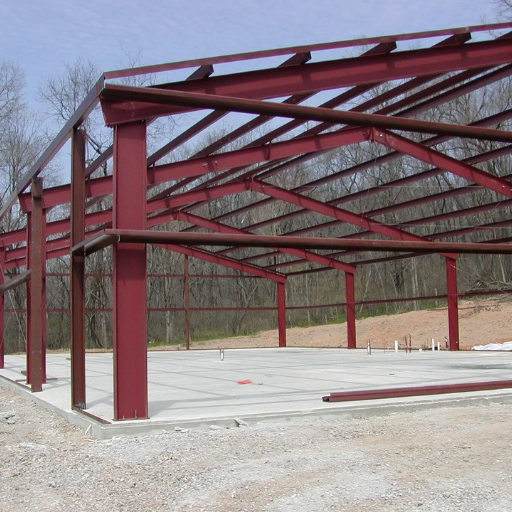
Based on certain aspects of a project, Cold-formed steel may replace red iron. It is lighter, more resistant to corrosion, and cost-effective on a smaller scale. On the other hand, red iron is preferred for use on large industrial and commercial buildings because it is more durable and stronger under heavy loads. For these two materials, the decision must consider the scale of the project, budget, and environmental factors for efficiency.
Exploring the Characteristics of Cold-Formed Steel
Cold-formed steel, or CFS, is a popular steel construction material because it is efficient, versatile, and eco-friendly. Unlike hot-rolled steel, CFS is made by hot rolling steel sheets. This process results in much lighter steel sections while maintaining their strength and durability.
Key Characteristics and Data of CFS:
- High Strength-to-Weight Ratio
CFS is perfect for projects where weight savings are essential because it has an impressive strength-to-weight ratio. Modern CFS has a typical yield strength ranging from 33 ksi to 80 ksi, which increases alongside its grade and intended use. This high strength means that lightweight yet resilient structures can be built.
- Durability and Long-Term Performance
One of the significant advantages of CFS is its galvanized coating, which protects the steel from corrosion. This enables CFS to withstand difficult environmental conditions for a long period. Research suggests that galvanized CFS requires very little maintenance for up to 75 years under normal conditions, which makes it a durable option for many applications.
- Design Flexibility
CFS can be easily shaped into C-channels, Z-sections, and even custom profiles. Thus, it is usable for nearly any residential, commercial, or industrial project.
- Environmental and Economic Benefits
CFS is fully recyclable and can be made from recycled materials, supporting environmental goals. In addition, its lightweight property helps cut down handling and transportation costs. Moreover, precise manufacturing reduces on-site construction waste and time, decreasing on-site waste.
- Fire and Seismic Resistance
CFS contributes to the fire resistance of structures, enhancing fire resistance due to its non-combustible properties. Some studies have also demonstrated that CFS cold-formed sections are good under seismic loads because of their elasticity and the way they dissipate energy during earthquakes.
- Applications and Market Growth
The cold-formed steel market is growing at an incredible rate worldwide. An industry report in 2022 indicated that it is expected to increase with a compound annual growth rate of 5.2% from 2023 to 2030. Its uses include roofing systems, wall panels, purlins, and frame constructions in both residential and commercial buildings.
Summary of Advantages
Due to these characteristics, CFS is often the material of choice when working on a project that needs to be cost-effective, strong, and easy to modify. CFS can be used in lightweight roofing systems and strong frame structures, and it fulfills diverse architectural and engineering specifications.
Comparative Analysis: Cold-Formed Steel vs Red Iron
| Feature | Cold-Formed Steel | Red Iron |
|---|---|---|
| Strength | Suitable for light to mid-size structures. | High strength, ideal for large-scale projects. |
| Durability | Vulnerable to bending under heavy loads. | Withstands harsh conditions with minimal wear. |
| Rust Resistance | Prone to rust without treatment. | Coated to prevent rust and corrosion. |
| Applications | Ideal for smaller buildings and panels. | Best for industrial, commercial, and hangars. |
| Construction Speed | Light materials allow quick assembly. | Prefabricated parts speed up construction. |
| Cost | Lower initial cost for small builds. | Higher cost, but long-term savings on upkeep. |
| Clear Span Capability | Limited span without support columns. | Allows large spans without interior columns. |
| Eco-Friendliness | Recyclable, but less eco-friendly than Red Iron. | Highly sustainable and recyclable material. |
| Fire Resistance | Less fire-resistant unless specially treated. | Non-combustible, superior fire protection. |
| Maintenance | Requires consistent upkeep to prevent corrosion. | Minimal maintenance due to its longevity. |
Suitability for Various Types of Construction
Due to the properties and versatility of Cold-Formed Steel (CFS), it can be used in different types of constructions. Listed below are five areas where CFS is one of the most effective materials in construction with their details:
- Residential Construction
- CFS is lightweight, easy to handle, and suitable for single and multi-family homes.
- Delivers a high strength-to-weight ratio, which improves material sustainability while enhancing durability.
- It will not burn or be infested by pests, ensuring long-term structural reliability and safety.
- Commercial Buildings
- Commonly found in mid-rise office buildings, retail, and warehouse spaces.
- Can be assembled quickly to save on time and costs.
- Perfect for open-plan designs since it allows for large spans.
- Industrial Facilities
- Applicable for industrial production, warehouse capacity, and manufacturing companies.
- Industrial productivity is maintained with protection from harsh environmental factors.
- Specialized industrial applications can be tailored due to the easy combination with other materials.
- Educational and Institutional Structures
- Ideal for durable infrastructures for schools, libraries, and healthcare centers.
- Framing by CFS aids in enhancing energy-efficient building operations to lower costs.
- Meets the country’s stringent building regulations and safety standards.
- Infrastructure Projects
- Applicable for constructing bridges and tunnels and other related infrastructure components.
- possesses high tensile strength and can carry a considerable amount of structural load.
- Best suited for off-site modular assembly and rapid site deployment in difficult-to-reach areas.
CFS remains unmatched in these diverse fields due to its cost-effectiveness, adaptability, and long-lasting nature. It is beneficial in construction projects that must comply with contemporary construction standards.
References
- Hematite – Common Minerals – University of Minnesota – This source discusses hematite, its forms, and its color variations, which may include red.
- Significant link found between heme iron, found in red meat, and type 2 diabetes risk – Harvard School of Public Health – This study explores the health implications of heme iron, particularly in red meat.
- A Propensity-Matched Cohort Study of Intravenous Iron versus Red Cell Transfusions – Johns Hopkins University – This academic paper compares intravenous iron and red cell transfusions in the context of preoperative iron-deficiency anemia.
Frequently Asked Questions (FAQ)
Q: What are the main differences between red iron and steel structures?
A: The main differences between red iron and steel structures lie in their composition and application. Red iron, or steel painted with a red oxide primer, offers excellent rust resistance and is commonly used in large-scale construction projects. On the other hand, steel structures can be made from various types of steel, such as galvanized or tubular steel, each offering different levels of strength and durability for different types of buildings.
Q: Why should one choose red iron over other construction materials?
A: Red iron is often chosen for its strength and durability, particularly in large-span projects. Due to its ability to support substantial weight, it is ideal for projects requiring long, uninterrupted spans, such as warehouses and large commercial buildings. Additionally, red iron’s resistance to rust makes it a long-lasting option for metal building solutions.
Q: How do galvanized and red iron steel buildings compare regarding rust resistance?
A: Galvanized steel is coated with zinc to prevent rusting, while red iron is treated with a red oxide primer. Both offer good rust resistance, but galvanized steel is generally considered superior in environments where structures are regularly exposed to moisture. Red iron is typically used in environments where large spans and heavy loads are more critical.
Q: What are the benefits of using tubular steel in building construction?
A: Tubular steel is known for its lightweight and high strength-to-weight ratio, making it ideal for construction projects where weight is a concern. Its hollow structure allows for easy integration into various building designs, and it is often used in tubular steel buildings that require a sleek, modern aesthetic.
Q: In what scenarios should one consider using cold form versus red iron buildings?
A: Cold form steel is typically used in smaller-scale projects and residential buildings due to its lightweight nature and easy assembly. Red iron, by contrast, is more suitable for large-scale industrial and commercial projects where strength and long spans are necessary. Choosing between the two depends on the specific needs of the building project and the desired outcome.
Q: How do red iron steel buildings and steel building kits differ in construction?
A: Red iron steel buildings are often custom-engineered for specific projects and offer robust support for large spans and heavy loads. On the other hand, steel building kits are pre-fabricated and can be quickly assembled on-site, making them a popular choice for smaller projects or those with tight timelines.
Q: What type of building is right for a project requiring significant engineering and long spans?
A: Red iron steel buildings are often the best choice for projects requiring significant engineering and long spans. They provide the necessary structural strength and durability to support heavy loads and large spans, making them ideal for warehouses, factories, and other industrial applications.
Q: How does the strength of steel construction compare to red iron construction?
A: Both steel and red iron construction offer high strength, but red iron is specifically designed to handle larger spans and heavier loads. Steel construction, particularly when using galvanized or tubular steel, provides versatility and corrosion resistance, making it suitable for various applications.
Q: What factors should be considered when comparing red iron vs steel building options?
A: When comparing red iron vs steel building options, consider factors such as the project’s size, load requirements, budget constraints, and environmental conditions. Red iron is typically favored for large-span and industrial projects, while steel building options like galvanized or tubular steel may be better for smaller, more versatile applications.
Q: What makes red iron construction a preferred choice for industrial buildings?
A: Red iron construction is preferred for industrial buildings due to its ability to support large spans and heavy loads, which is essential for facilities like warehouses, factories, and distribution centers. Its rust-resistant properties and robustness make it a durable choice for long-term industrial use.


